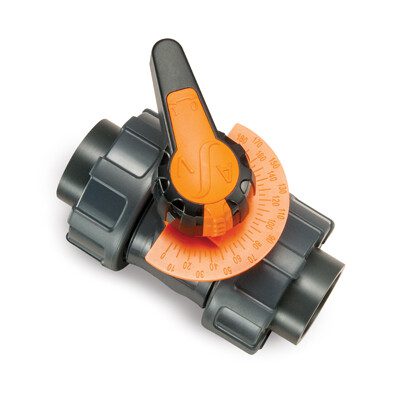Blend Manifold Build – My Custom Soft Wash 3-Valve Setup
Prior to building my first blend manifold, I had a bunch of decisions to make. Before I launched my pressure washing company, I did hours and hours of research on which equipment to use and why. I soon learned there are two basic methods of delivering a cleaning solution to a home’s exterior, down-streaming and soft-wash. The term soft wash can get confusing, however. Soft wash simply means low-pressure application of a cleaning solution that will not damage a building’s exterior.
Commercial pressure washers, 4 gallons per minute and up, are scary strong and if used improperly can force water underneath a home’s siding, through construction gaps, or behind window and door jambs. They can also damage wood siding such as cedar shake or even fiber cement products like Hardie Board. Having said that, I consider down-streaming as a method of soft-washing since pressure is reduced significantly in down-stream mode allowing for a “soft” application of the cleaning solution. Its only limitation is the cleaning blend. You have to pre-mix your cleaning solution which isn’t right for every application.
During my time as a Navy SEAL, I learned that when it comes to gear, one is none and two is one, so I have both systems available on my rig. Soft wash systems are unique however, in that they allow for the use of a blend manifold which can meter the exact amount of cleaning solution needed. This is especially important for cleaning roofs. Cleaning most exterior siding requires a 1-3% sodium hypochlorite (SH) mix, but a roof will require a strong 6% blend. The only way to do this on the fly is with a blend manifold.
Blend Manifold Basics
A blend manifold has metering valves that control how much cleaner is allowed into the system. It automatically mixes the concentrated SH with water to arrive at the desired mix strength. A blend manifold can consist of multiple metering valves to allow adding additional cleaners into the mix. I can add two additional cleaners to my SH mix for stubborn stains or simply based on the material to be cleaned.
My blend manifold has three metering valves on it. Each valve is plumbed to a tank that holds a specific cleaner. My SH metering valve is ¾” allowing for maximum flow of the SH. The other two metering valves are plumbed to two different tanks each (four in total). I have a three-way valve that will allow one metering valve to pull from two separate tanks. This flexibility allows me to spray an alkaline cleaner like Cleansol BC, an Oxalic acid or Sodium Percarbonate and a bleach neutralizer. Each of these are used for different cleaning applications.
As you have probably figured out by now is that a blend manifold has plenty of benefits. Another largely overlooked benefit is the material cost savings. Being able to dial-in the exact amount of necessary cleaner saves a few dollars on every single job. That adds up over time and contributes to you company’s profitability.
Since it saves you money in the long run, the investment isn’t that bad if you purchase the parts separately and build a custom unit for your application. The metering valves are the most expensive part followed by the check valves. The rest of the blend manifold is nothing more than Banjo brand fittings that I source mostly from Zoro.
Blend Manifold Parts and Resources
Click here if you’re interested in starting your own pressure washing business.



I am looking for a link list of a complete 1″ metering manifold with banjo fittings for the barbs and those quick release banjo fittings to the barbs and pressure hoses so that I can take the whole thing out and replace fittings and seals easier. Really appreciate it!
Hey John,
My go-to supplier for Banjo fittings is Zoro. Here’s a link: https://www.zoro.com. Just do a search for “banjo” on their site and you’ll see everything you’re looking for.
building a soft wash system and need metering vales SH.
One of the best and most economical metering valves are going to be GF Signet and you can find them on Amazon.